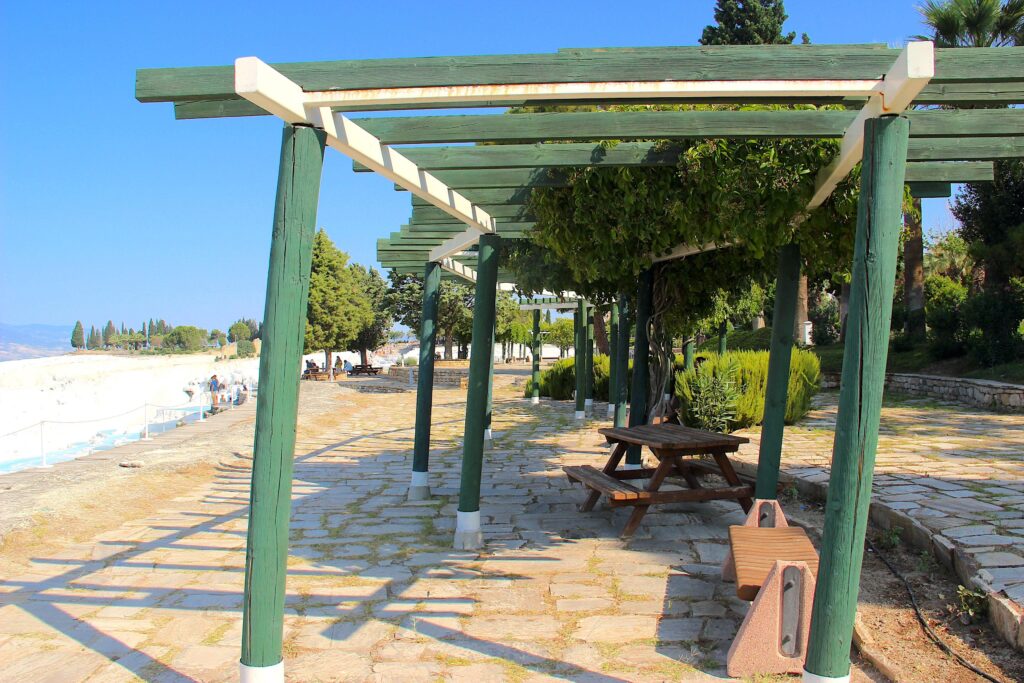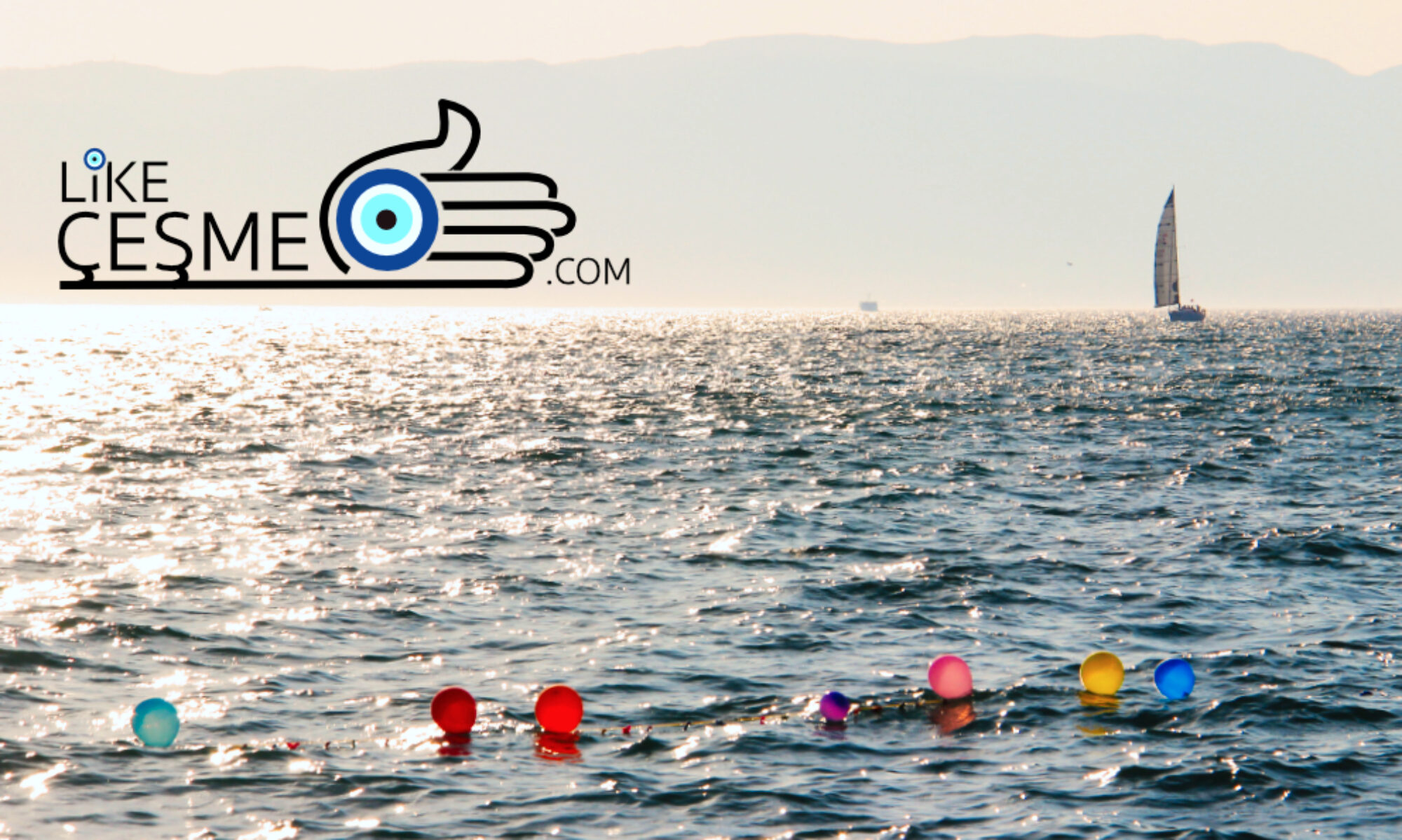The white terraced basins of Pamukkale’s “Cotton Palace” derive from springs in the approximately 200-meter-high cliffs that overlook Pamukkale village and the plain of Cürüksu in the province of Denizli. The calcite water deposits have created a fantasy landscape.
In the late 2nd century B.C., the dynasty of the Attalids, the kings of Pergamon, established the thermal spa of Hierapolis. The well-preserved ruins of the baths, temples and other Greek monuments of Hierapolis are on the 1,077-hectare world heritage site immediately above the white cliffs.
Location: Merkez, 20190 Pamukkale, Denizli. 310km east of Çeşme, an approximately 4-hour drive.
For price transport, advance tickets and guided tours from Çeşme, Alaçatı, and other locations to Pamukkale, see Get Your Guide, who present various options – click here for details, prices and reservations.
Entry: TL: TBC. It is also accessible on Museum Pass Türkiye and Museum Pass the Aegean.
Pamukkale – Table of Contents
The Terraced Basin Travertines
Calcite-rich mineral waters from hot springs, emerging from the cliff face that stands in front of the village of Pamukkale. This visually stunning landscape includes a series of petrified waterfalls, stalactites and pools with step-like terraces, some of which are less than a meter in height while others are as high as six meters. New deposits of calcium carbonate give these formations a constant white coating.
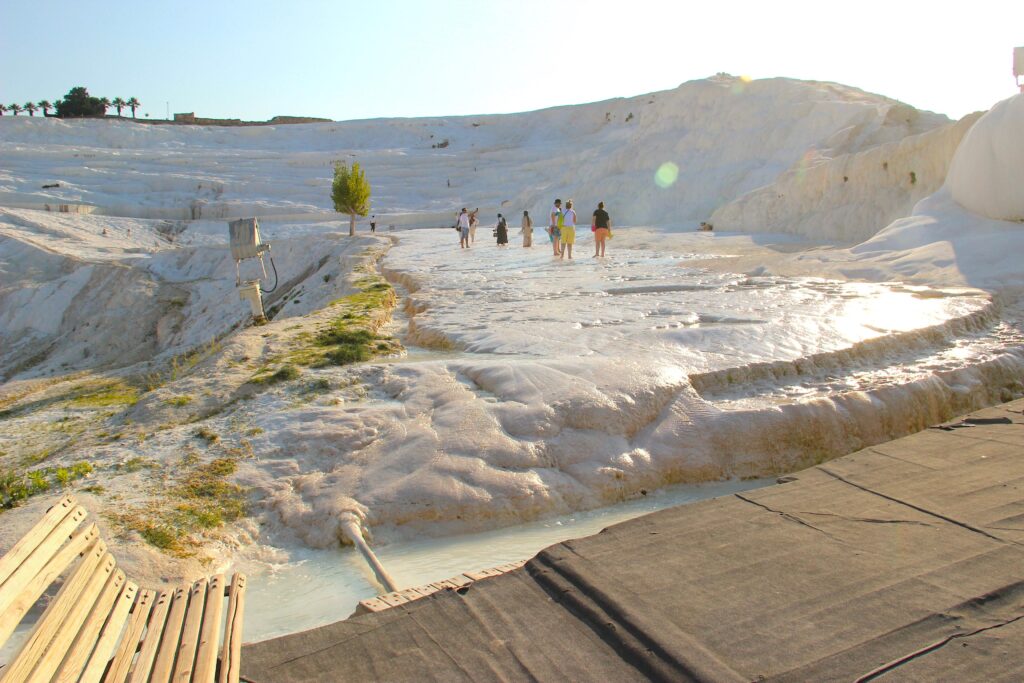
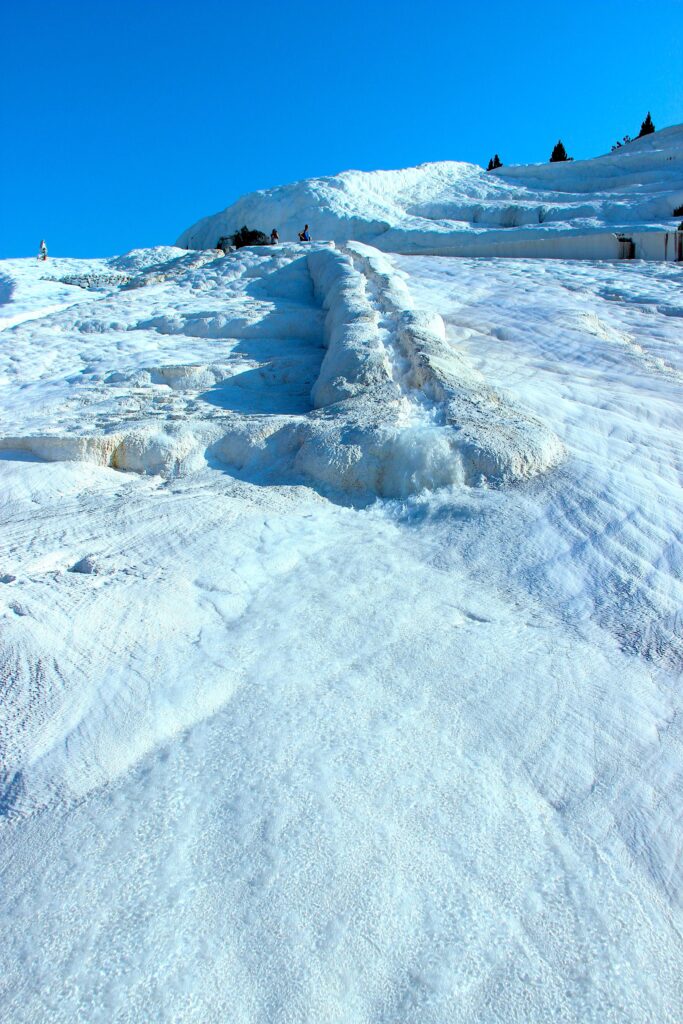

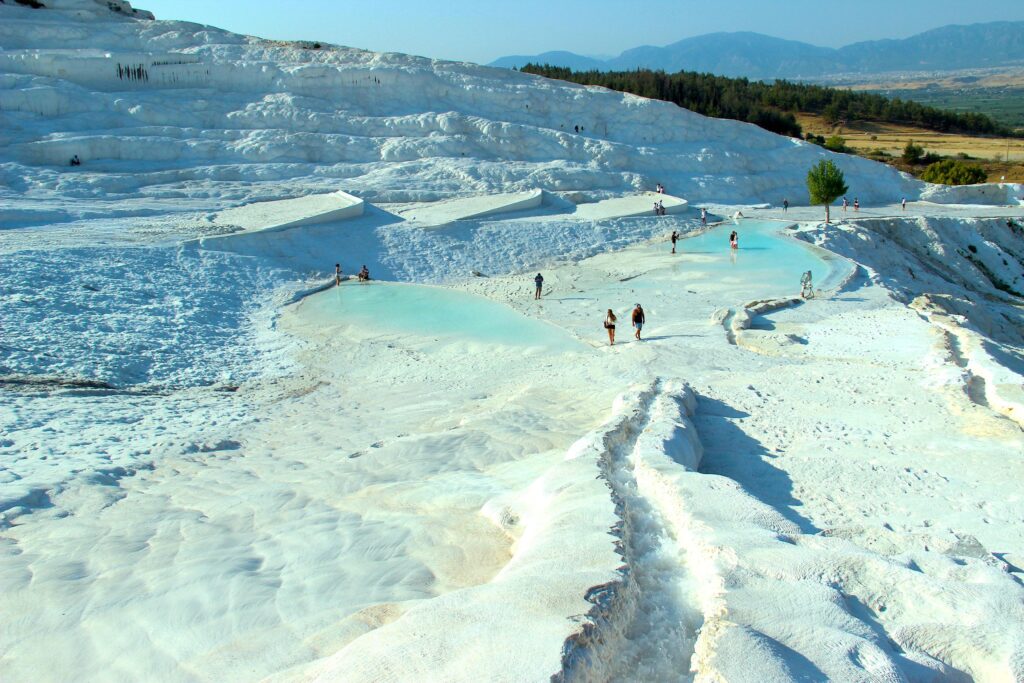

The terraced basins and the historical city of Hierapolis are on the same site. Access is with an entry ticket from the official booths either of three gates, from (i) the town entry on the central south slope in Pamukkale village, or by car/bus from (ii) the south entrance 2km east of the village, or (iii) the north entrance between the villages of Develi and Karahayıt.
Access is restricted to some of the pools on the slope from the top of the hill down to Pamukkale town to preserve the travertines and maintain safety on the cliffs. Everyone is required to remove footwear while walking on the public incline. In most places, the calcium is comfortable to walk on and has a good grip; however, it can be a little uncomfortable in areas where the calcium deposits are broken and gritty. In shallow pools with the soft silted mineral deposits, they can be slippery.
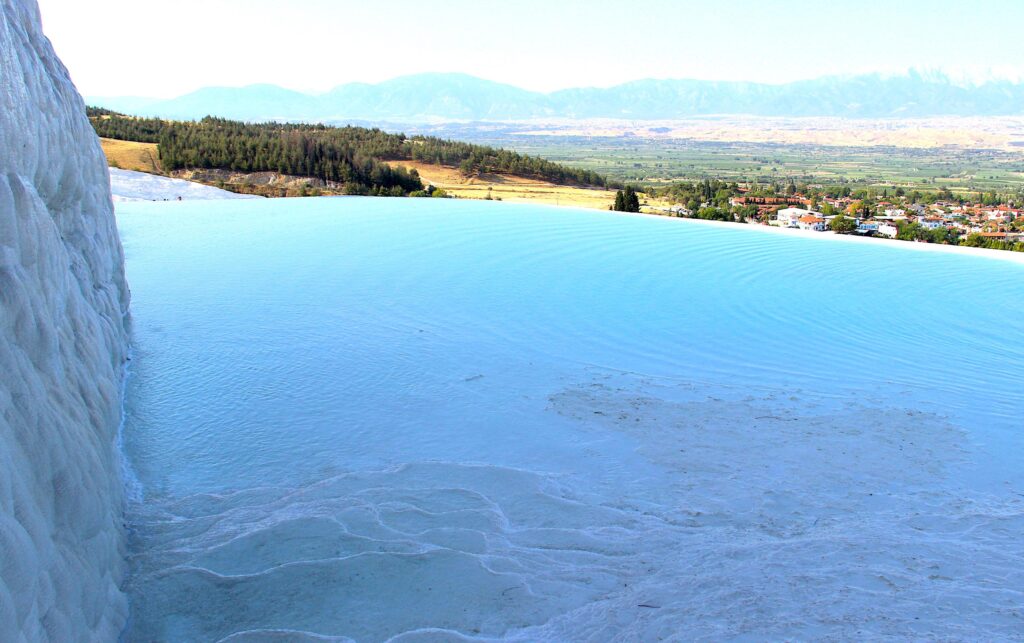
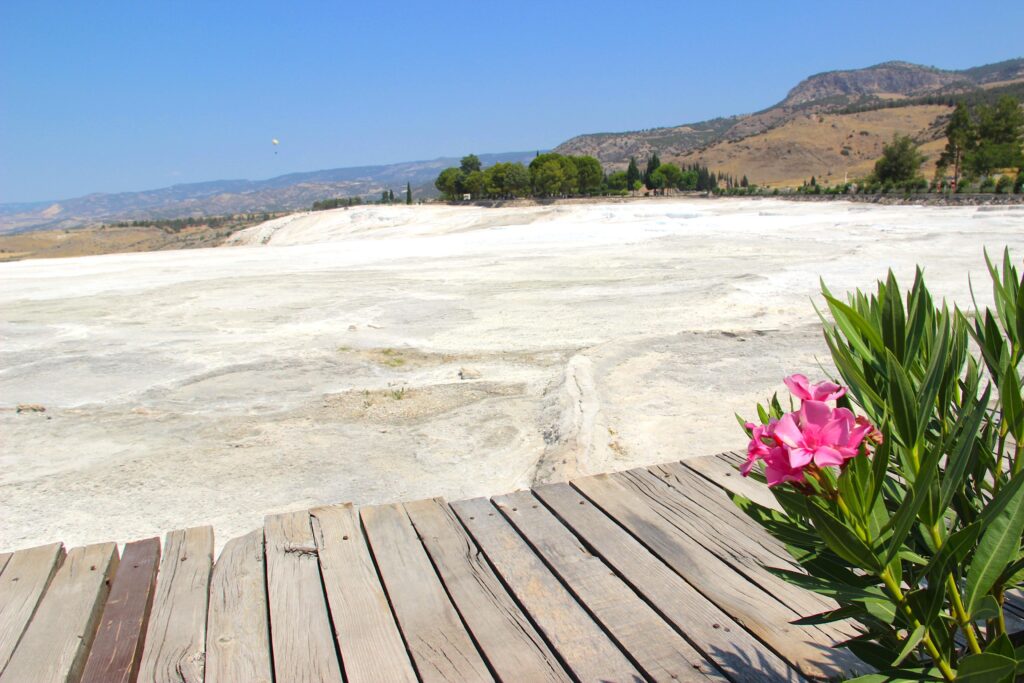
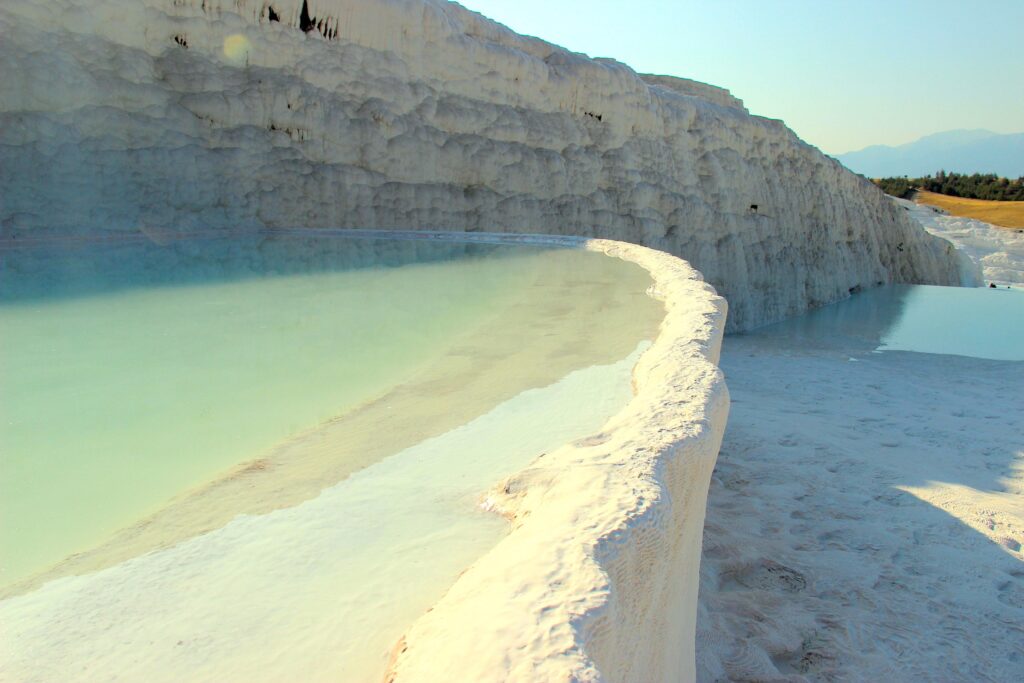
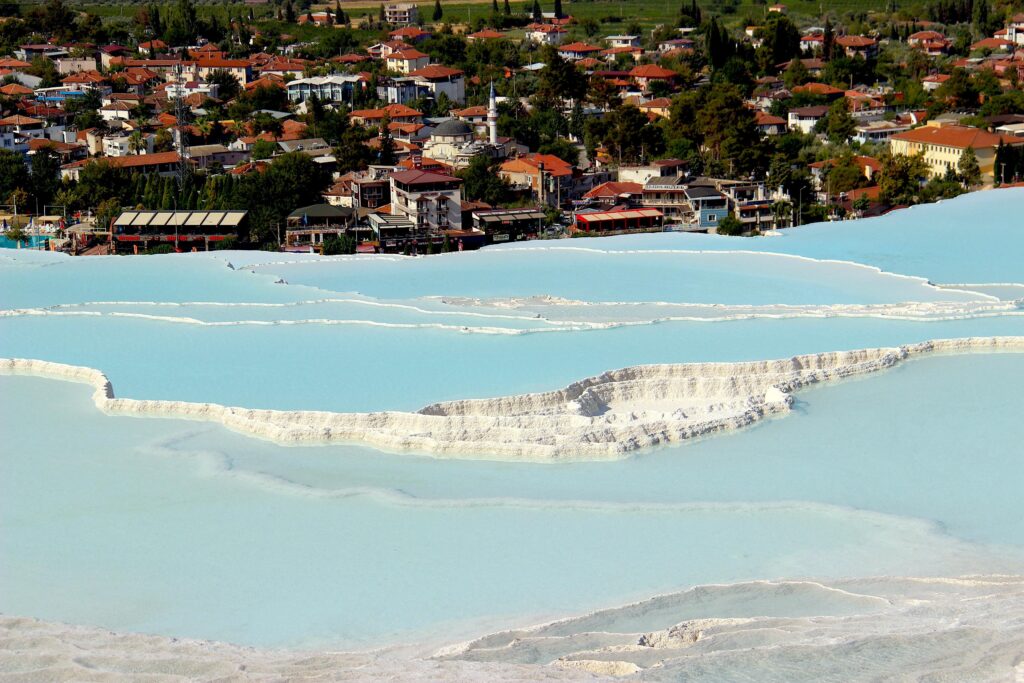
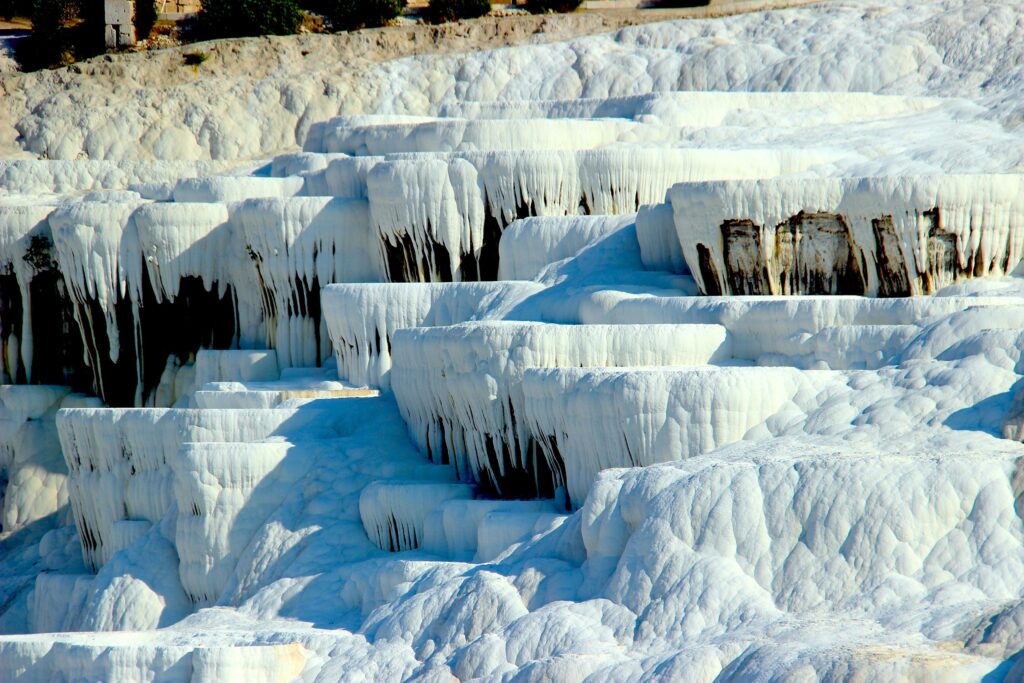
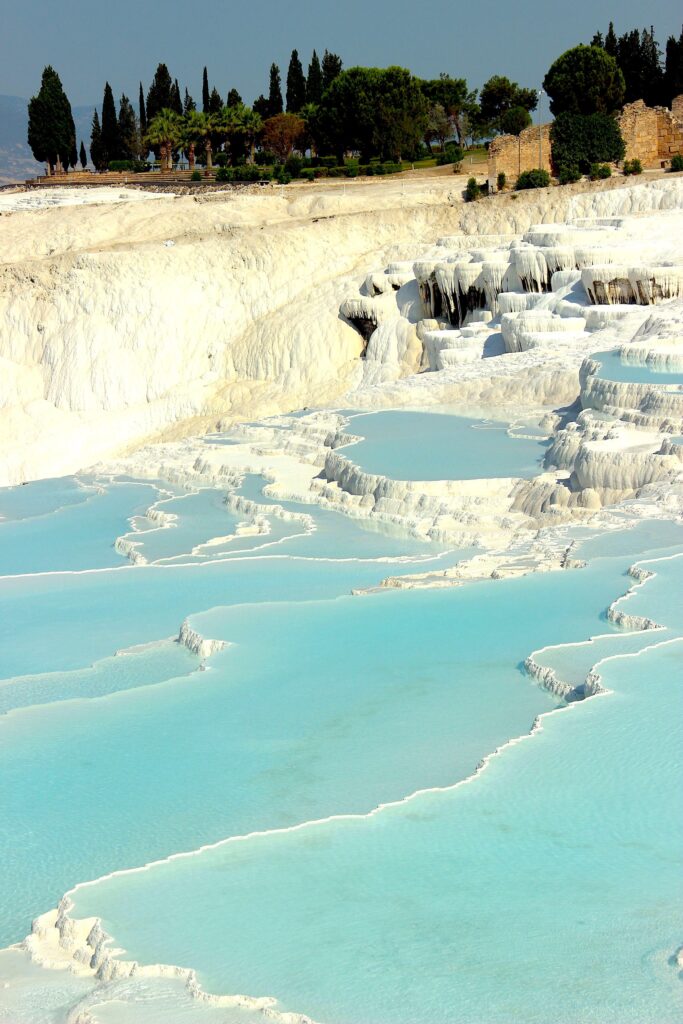
The Ancient City of Hierapolis
See also: LikeCesme.com – The Ancient City of Hierapolis
The ancient city of Hierapolis was a Greco-Roman spa city founded in the 2nd century B.C. It became a prominent religious and healing centre during the Roman and Byzantine periods. Known for its sacred hot springs, which are believed to have healing properties, the city attracted visitors from across the empire. Features of Hierapolis include a well-preserved Roman theatre with a capacity of over 12,000; One of the largest necropolis in the ancient world, with various tombs and sarcophagi; the Temple of Apollo, one of the principal deities worshipped in Hierapolis; the Plutonium, a sacred cave linked to Pluto, god of the underworld, emitting poisonous gases believed to be the gateway to the underworld. Hierapolis was also an early centre of Christianity and is considered the burial site of Saint Philip, one of the apostles. Today, it is a UNESCO World Heritage Site, renowned for its ruins and proximity to Pamukkale’s natural travertine terraces.
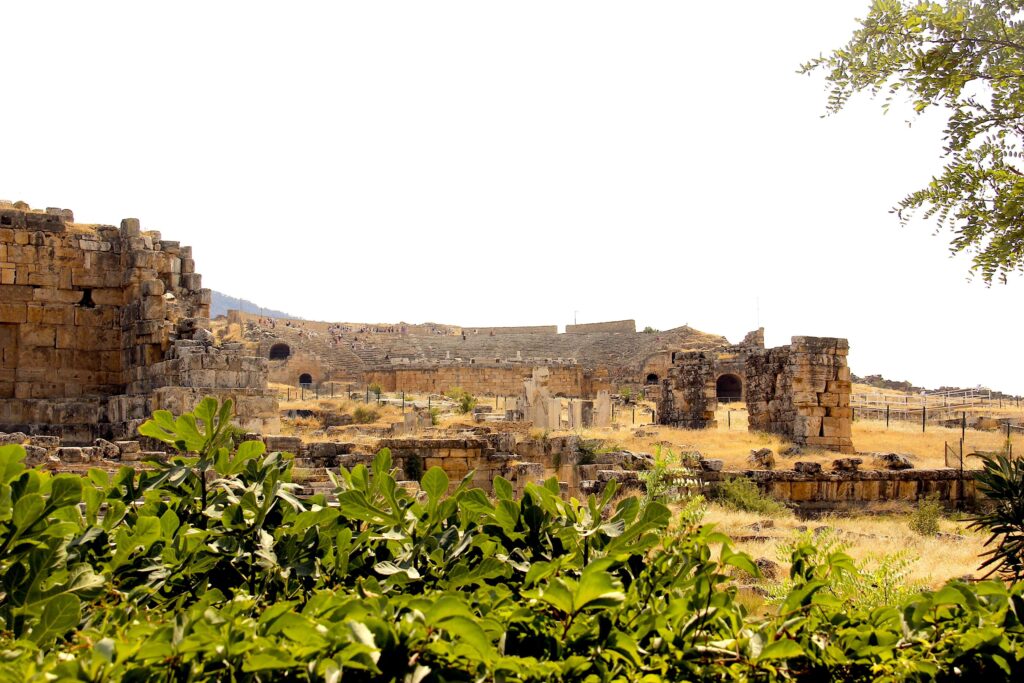
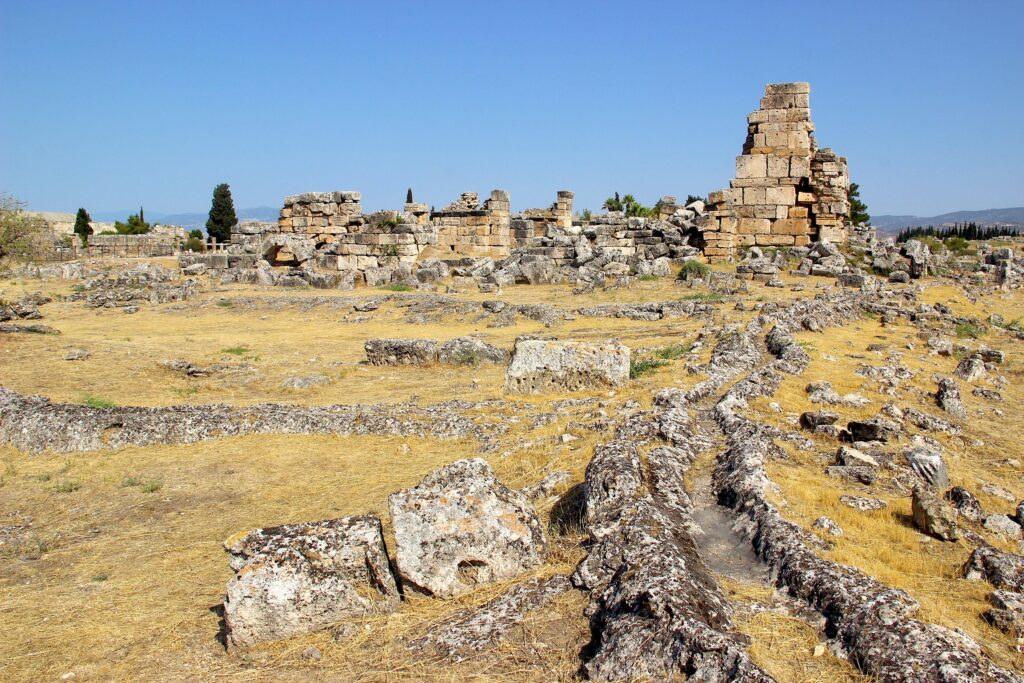
Pamukkale Activities
Ballooning & Paragliding
As with Cappadocia in central Anatolia, Pamukkale is a popular destination for balloon rides and is a significant part of the attraction that brings in many daily coach tours from the Mediterranean resorts such as Marmaris and Antalya. The balloons take off near sunrise (approx. 0600-0700 hours) and drift with the wind, rising 300-600 metres above the lake, travertines and Hierapolis and into the valley for around 1 hour. Rides can be booked online or at the hotel in Pamukkale or Çeşme. A basic ballooning experience in Pamukkale is from approximately €60.
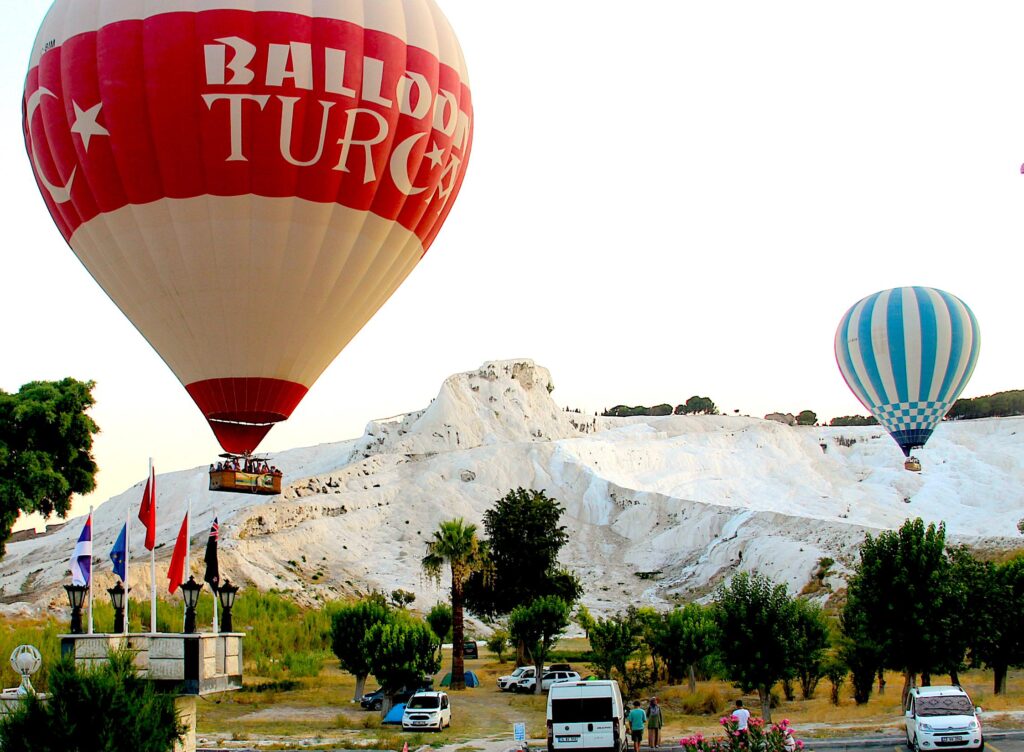

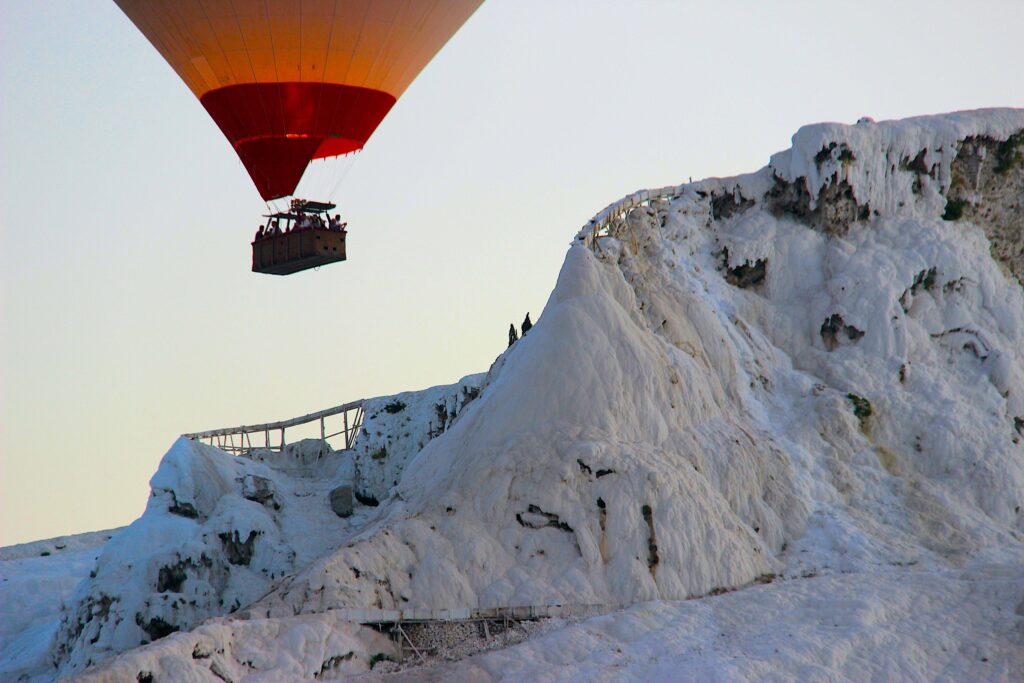
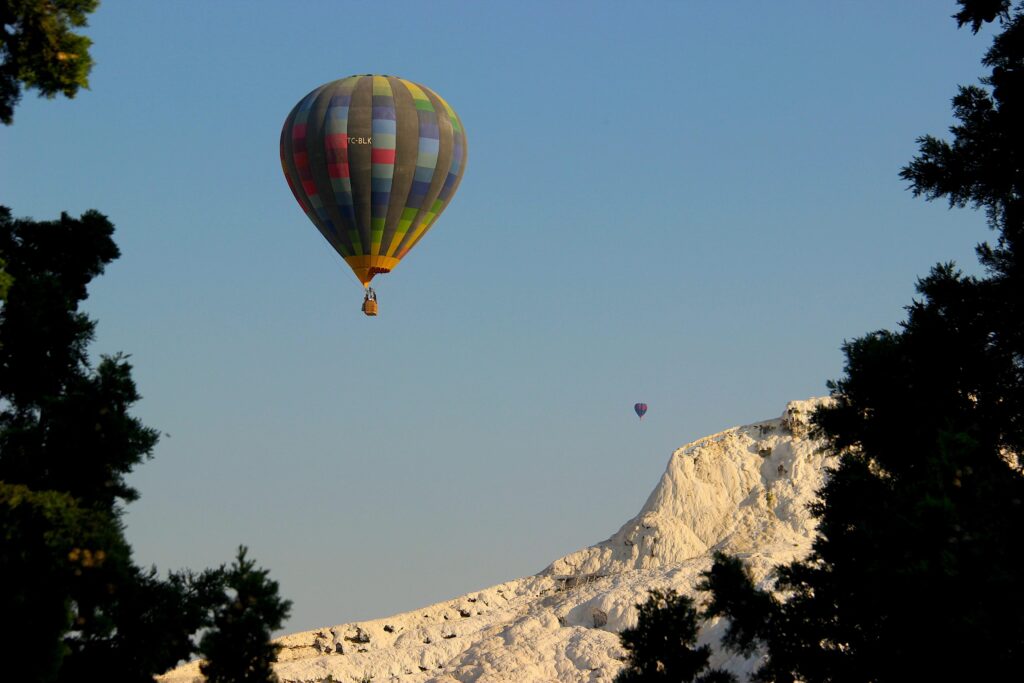
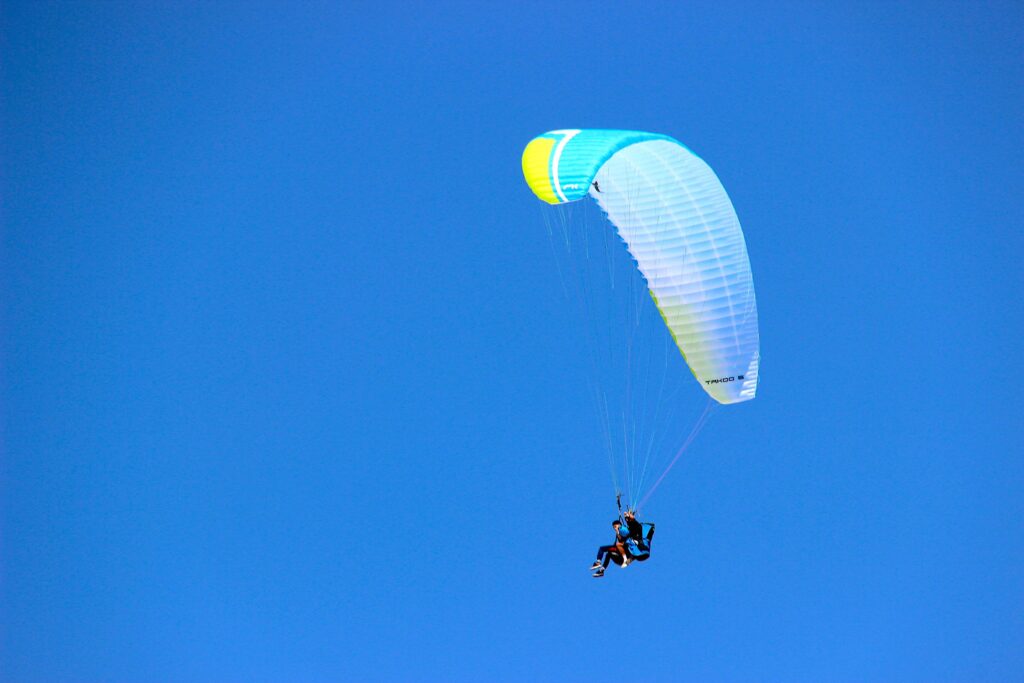
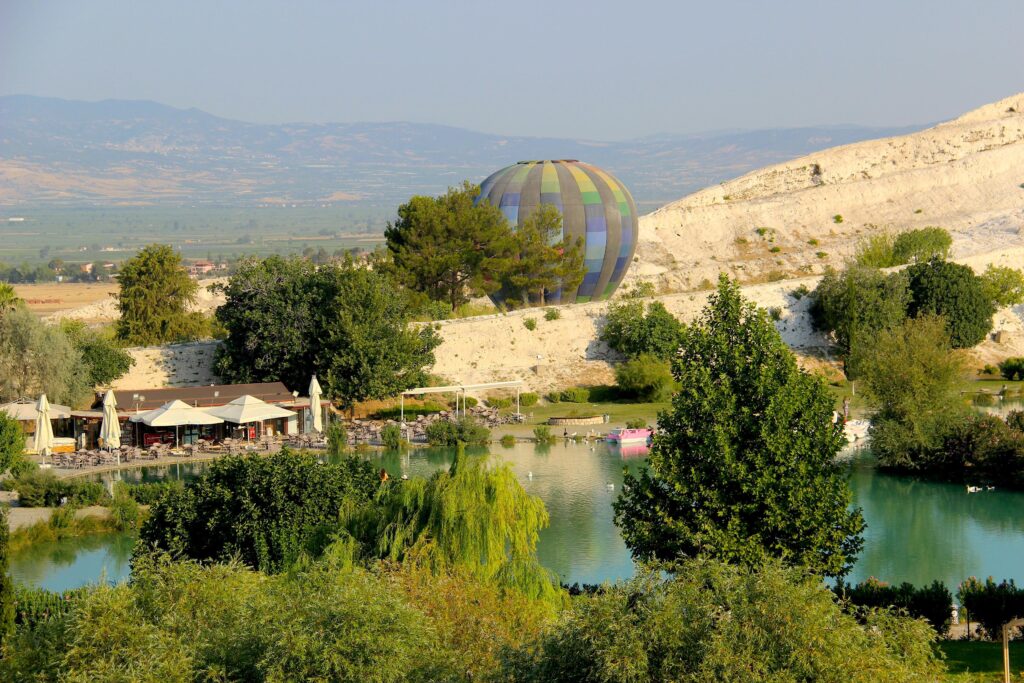
Tandem paragliding for novices is also a popular experience in Pamukkale; rides are approximately 15-30 minutes, depending on wind conditions, and take off from the hills behind Hierapolis, landing in the valley west of Pamukkale village. Paragliding is available all day, however, it is advised to do so in the mornings as into the afternoons the winds tend to increase and flights might be cancelled. A basic tandem paragliding experience in Pamukkale is from approximately €40.
Bathing in the Cleopatra Pool
AKA the Pamukkale Antique Pool, it is an artificially sculpted thermal (36ºC) spring pool said by legend to have been a gift from Mark Antony to Cleopatra. The Temple of Apollo is said to have collapsed into the pool during an earthquake in 692 A.D., where it lies today. The pool is surrounded by the food halls & stands and is watched over by streams of coach parties. Despite the crowds, the waters remain clear. Entry to swim in the Cleopatra Pool is additional to the Pamukkale ticket price at TL 100 (as of July 2021).
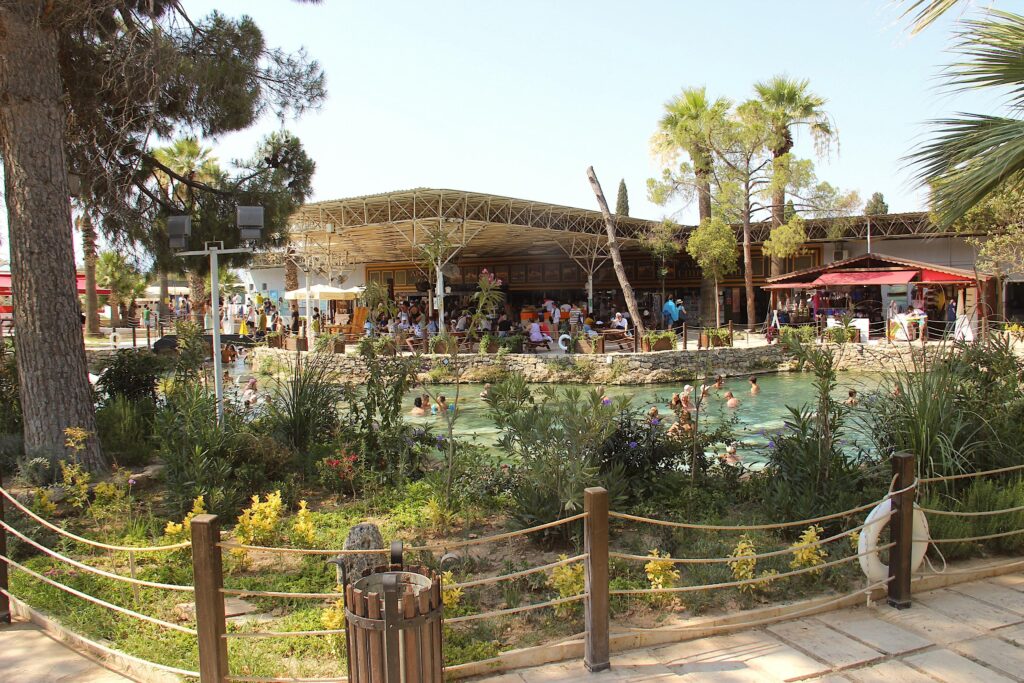
Pamukkale Restaurants
As with almost all Turkish destinations, Pamukkale offers an excellent choice of restaurants with well-priced local cuisine. A bonus for international travellers is the unusual choice of Asian cuisine, including restaurants offering Chinese and Indian menus. The food is of good quality and genuine to meet the demands of the many Asian clients who visit Pamukkale. While pak choi may not be on the menu, the freshness and quality of Turkish vegetables suit Asian cuisine very well.

Pamukkale Traveling tips
When to go: It is estimated that approximately 2-million tourists visit Pamukkale each year, the route along the accessible travertines is in places narrow and can become congested. We, therefore, recommend that you start early to avoid the crowds – it also helps avoid the midday sun. Access from the town entrance opens later than access from both the south and north entrances, so it is advisable to use these entrances for a very early start. July & August are not only extremely hot under the shadeless sun, but it is also a busy period for the coach tours arriving from the Mediterranean resorts, so if you have the options, it is better to visit in spring or autumn.
How long to stay: It is possible, but not advisable, to go to Pamukkale for the day. Unless you set off in the very early hours from Çeşme, you risk arriving with the crowds in the midday heat and for a long and exhausting day out. Spending one night in a local inexpensive hotel allows you to arrive at leisure and stop en route to an ancient city such as Sardis, Tripolis, Laodicea, or Afrodiasis (requires a 1-hour detour). While there is not so much to do in Pamukkale itself, 2-nights would give you time to chill at the swimming pool after climbing Pamukkale and Hierapolis and open the opportunity to explore several of the ancient cities of the area.
What to take: Since shoes must be removed on the slope and Hierapolis requires some climbing to explore, light, sturdy footwear and a bag and a towel to carry them would be advised. The area lining the top of the hill has some attractive herb and flower gardens, with benches and shade from pergola structures and pine trees from which to enjoy the views. This area is ideal for a picnic, and while there is a cafe at the top of the hill and a food complex around the Cleopatra Pool, these areas are ideal for getting away from the groups of coach tours.
